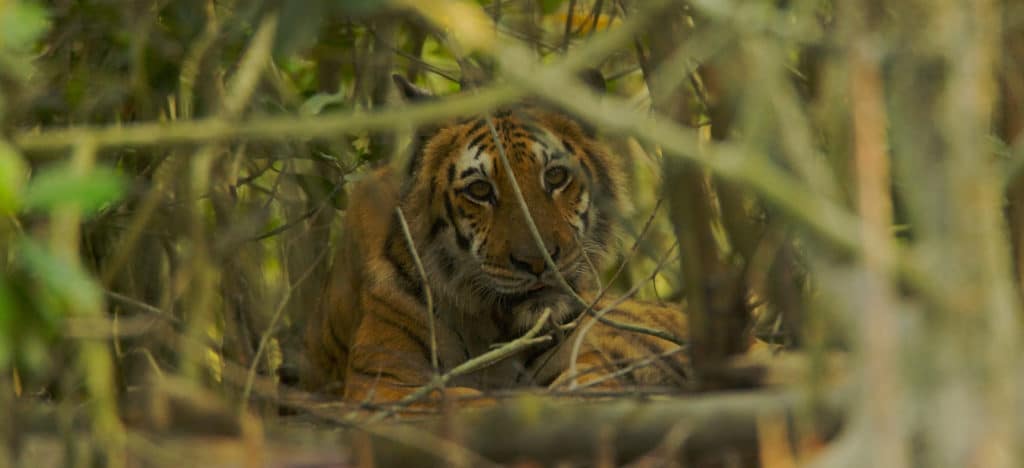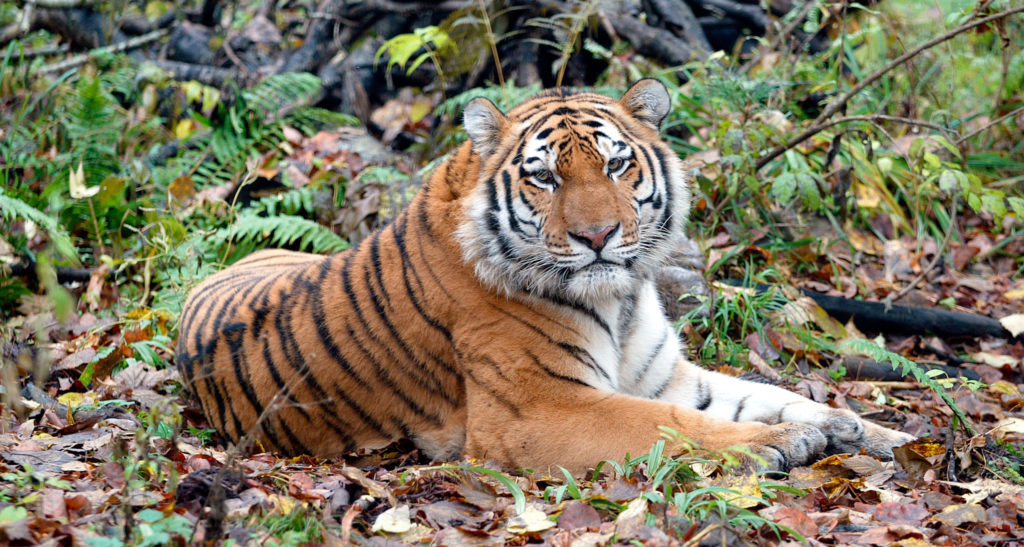13 countries where you might find wild tigers
The wild tiger population has dropped 97% over the last hundred years, making them an endangered species. The TX2 campaign is a global commitment to double the number of wild tigers made by the governments of 13 tiger range countries. Take a spin around these 13 countries where wild tigers can still be found and where we hope this amazing species can continue to thrive.
1. Bangladesh
Bangladesh conducted its first national survey in 2015 in the challenging Sundarbans where tigers swim between dense mangroves. The survey revealed that there are just 106 tigers left in the Sundarbans. This female is part of a research study and is wearing a radio collar.

2. Vietnam
Anecdotal information suggests there are few tigers in Vietnam. They have not been photographed by camera traps since 1997. An updated figure is needed.
3. Cambodia
This is the last tiger photographed in Cambodia. It was taken in 2007, by camera trap in Mondulkiri Protected Forest. In 2016, WWF declared tigers to be functionally extinct in Cambodia. WWF is now collaborating with the Cambodian government to re-introduce the species to the region.

4. India
India’s first national survey in 2006 counted 1,411 tigers. Four years later 1,706 tigers were counted, and by 2014 that number had grown to 2,226. The tiger population in India is known to have been increasing at a rate of 5.8 per cent each year since 2006.
5. Bhutan
Bhutan is the only country where tigers roam in high mountains at 4,200 m above sea level and share their range with snow leopards. Bhutan conducted its first national tiger survey in 2014 and learned that the tiny Himalayan country was home to 103 tigers, up from the previous estimate of 75.
6. Thailand
In Thailand, tigers live in protected areas. There are known to be at least 189 tigers in Thailand. In 2016 camera traps discovered a new breeding population of the critically endangered Indochinese tiger living in a national park in eastern Thailand. This is likely due to recent increases in anti-poaching efforts.

7. Indonesia
Indonesia is a home to the last surviving population of Sumatran tigers – the smallest tiger subspecies. In 1978, experts estimated the population of Sumatran tigers at 1,000. This number has now dropped to as few as 400 individuals. Surveying tigers through the dense jungles of the Sumatra is challenging. This female Sumatran tiger was captured by camera trap in Rimbang Baling-Bukit Tigapuluh Corridor.

8. Laos
Anecdotal information suggests there are few or no breeding female tigers left in Laos. In 2010 the government said there were 17. An updated figure is needed.
9. China
The largest of the tiger sub-species, the Amur tiger is found in two provinces in the Russian Far East and small pockets in the border areas of China. In 2010, facilitated by WWF, Jilin province of China and neighbouring Primorsky province in Russia agreed an agreement to collaborate formally in working towards the first transboundary Amur tiger protected area. In 2015, the evidence of breeding Amur tigers was found for the first time in 10 years in China. A success attributed largely to improved law enforcement and protection. Currently, no more than 50 wild tigers are left in China.
10. Malaysia
The Malay Peninsula occupies the southern end of the distribution of the Indo-Chinese tiger and supports substantial populations of the subspecies. The tiger population of Malaysia is currently estimated to range between 250 and 340 individuals.
11. Russia
Russia conducts site-specific tiger surveys every year and national surveys every 10 years. The first national survey was in 2005, and estimated the population to be between 423 and 502. The most recent survey was in 2015 and showed that populations had increased to between 480 and 540 tigers.

12. Nepal
Nepal had 121 tigers in 2009. By 2013 this number had increased by over 60 per cent to 198 individuals. Nepal is on track to achieve the Tx2 goal of doubling tiger numbers by 2022.
13. Myanmar
Anecdotal information suggests tigers still exist in Myanmar. Surveys are needed to know the national tiger population.
Learn more about WWF’s global TX2 campaign to double wild tiger populations. Read more about Tigers and WWF’s work to protect them, or symbolically adopt a tiger today.

